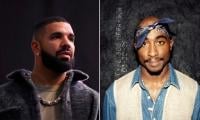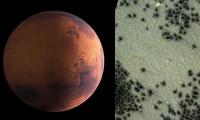Life is all about choices. Good or bad, right or wrong, intelligent or dumb – we make choices and our choices shape our lives in return. When a choice is made by an institution, private or public, it can give us an insight into the nature of the state and society.
On September 16, Pakistan’s media had to make a choice between two news items: a suicide blast at a mosque in Mohmand Agency that killed 35 persons, out of which at least 24 were teenagers, and the arrest of an MQM leader, Khwaja Izharul Hasan, by a flamboyant police officer in Karachi. It appears that the die was cast for almost all television channels and most newspapers – the arrest in Karachi was far more important than the carnage in Fata. What does this choice tell us about Pakistani media, society and state?
Let’s start with the media. We like to believe that we have a consumer/producer relationship with media. Unfortunately, things are not that simple, particularly with the electronic media. A television channel survives solely on its advertisement revenue as programmes are offered to viewers for free. It essentially creates programming to attract viewers to whom advertisers can attempt to sell their products. In other words, television networks do not sell their TV shows to viewers; they sell viewers to advertisers. So viewers are the product of the programming that is sold to advertisers.
Put differently, television channels sell the attention of the viewers to advertisers and rely on programming to attract viewers’ attention. The advertiser is not bothered about the news value or entertainment value of these programmes; he is interested in knowing how many viewers’ attention a channel can capture at a certain time and who its viewers are.
The demographics of viewers are as important as their numbers. Buyers of advertising on mass media spend a great deal of money and do a great deal of research to guide their buying decisions. They want their advertisement campaigns to reach their potential buyers. For most advertisers, the urban middle class is all important because they consume a bulk of their products and services. The media, as a result, gets locked in a competition to attract the attention of this crucial segment of society.
Those who cannot buy refrigerators, air conditioners, shampoos or fairness creams are second-class citizens in the modern marketplace and the world of media. This harsh market reality has serious implications on the representation of the urban poor, less developed regions and the rural areas where poverty is concentrated. The poor are represented on the media but not on their own terms; they are represented with a middle-class gaze, and are stereotyped on the media.
The Pakistani media’s relative disinterest in Mohmand was not only about ethnicity, as many Pakhtun nationalists suggested, it had more to do with class and geography. Even within Khyber Pakhtunkhwa the life of a person in Peshawar is far more important to the media than the life of a person in Bannu or Darra Adam Khel.
Now let’s look at the representation of Fata by Pakistan’s media, which is no different from their representation in our literature and textbooks. Reporting on Pakistan’s tribal areas, particularly Fata, has always been problematic because these areas are seen differently from the rest of the country. In the understanding of most people, they are tribal while rest of the country is not.
Pakistan inherited Fata from the British as a frontier. Frontier essentially means an area that belongs neither here nor there. The British imagined it as a buffer upon buffer between Afghanistan and British India while Afghanistan itself was designated as a buffer between the Russian and the British empires. In Punjab and Sindh, the term ‘Ilaqa ghair’ (the area that belongs to strangers) is still used to refer to Fata.
Though the British saw Fata as a bad land, just as the Americans see this area today, they found this place and its people quite exotic and stereotyped them as noble savages. As often happens, these stereotypes peddled by British officers and travel writers were internalised by South Asians including the people of Fata themselves. In the 1990s, when Pakistan’s tourism department made a feature film to promote Pakistan’s image, it picked the character of a tribal truck driver who imposes Fata-like law in other areas. (The film was made by a famous artist family of Lahore.)
Imran Khan’s book on Fata was translated into Urdu as “Ghairatmand Musalman”. The stereotypes about Fata are so rampant that almost every Pakistani is an anthropologist and psychologist while commenting on Fata.
The Pakistani state found a useful strategic space in Fata and made instrumental use of its geography and its people. A group of tribals were sent to fight in Kashmir in 1948 when the British head of Pakistan’s military refused to engage his troops. In the 1980s, Fata became a frontline of Afghan jihad. The stereotypes about Fata proved handy in these adventures to mobilise people and justify policies.
Though the Pakistani state and the elite in Fata have benefitted from Fata’s status, the people of Fata have carried the burden of ‘ghairat’ (honour) and ‘riwaj’ (customs) at a horrible cost to their development and their lives and limbs. How this dispensation has failed the common man is evident from the rock-bottom socio-economic and human development indicators in the area. Only a class of criminal elite has benefitted from the opportunities provided by the war economy and absence of rule of law.
The tribal stereotypes have undergone a transformation since 9/11. From the land of ghairat, Fata turned into the land of terror and some tribal surnames have become synonymous with terrorism in the mind of the urban middle class. The new stereotypes are as incorrect as the earlier ones – and they are worse for the people of Fata. Due to these stereotypes, the media and people in the rest of the country see violence in these areas as something normal.
For decades, it was heresy to speak of changing the status of Fata. Luckily, a consensus has emerged among people of Fata and Khyber Pakhtunkhwa on integrating Fata into KP. This provides Pakistani policymakers an historic opportunity. However, this crucial question has not been properly debated on the media, and stereotypes dominate the discussion.
It is time for Pakhtuns in general and the people of Fata in particular to realise that the rest of the country is as ghairatmand as they are and they are as much in need of peace and prosperity as any other people on the planet. It is also time for the rest of the country to provide normalcy to the people of Fata. The media can play an important role by representing their pain, happiness and aspirations properly.
The writer is a social anthropologist and development professional.
Email: zaighamkhan@yahoo.com
Twitter: @zaighamkhan
A representational image showing residents walking at a wholesale market in Karachi. — AFP/FileOnce again there is...
A representational image showing late Pakistani human rights activist and Supreme Court lawyer Asma Jahangir. —...
A representational image showing a security personnel sanding guard beside a ship carrying containers at Gwadar port....
A health worker administers polio vaccine drops to a child during a door-to-door polio vaccination campaign in Lahore,...
Armed militants of the banned Tehreek-e-Taliban Pakistan pose for a photograph in Orakzai Agency. —...
An aeroplane of the national flag carrier of Pakistan is seen in this file photo. — AFPWhile Pakistan considers...







